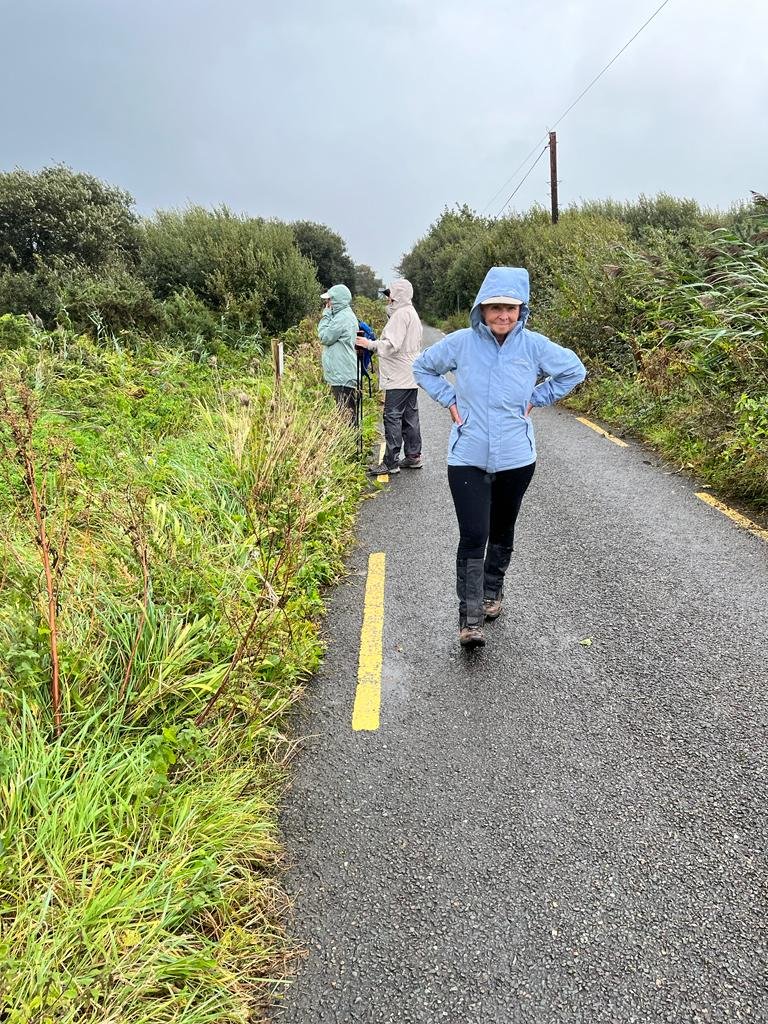Day 4 - 28.9km. Milecastles and menopause ...
/We had another long day of walking today - in beautiful countryside in Northumberland and then in Cambria. Rolling green hills, moor landscapes, and more rolling hills. And, of course, the wall. In the first day of our hike from Wallsend to Heddon on the Wall, we spent a long time examining the modest forts and short lengths of wall we came across, but in the past three days we’ve been spoilt with not only substantial stretches of wall, but the remnants of many forts and milecastles.
Milecastles were built every mile - this was a Roman mile - around 1.4 of today’s miles (a mile is 1.6km for those of us doing the conversion!) and were used to house groups of ten or so soldiers on a semi-permanent basis. Forts were built when needed as a reinforcement to supervise the border, and were built in addition to the Milecastles at regular stages from the west to east of England. The wall has stone foundations of around 6 metres right across the country. Originally the wall was around 4.5metres tall and built on the broad foundations, but as stone binding materials (from what I can work out) improved the foundations stayed the same but the wall became narrower. Above the wall itself, there was another 1.5 metres of structure - the walkway and the turrets.
I am not at all a historian, and if I was writing about this history for a novel I would check every fact I came across, but for the purposes of this recount I am relying on what I read before we came, and much more dangerously, what I read late at night when I’m a little weary. I also rely on signboards along the way, and sometimes they are contradictory!
It’s fascinating that although the wall was started in around AD122 and finished six years later, it had many renovations. And this is understandable as it was manned by the Romans until they left England in AD410 - that’s quite some occupation. Sometimes stretches of wall, particularly the early wall to the west which wasn’t built of stone, but timber, was replaced with stone. Some structures were rebuilt on the remains of previous structures, leading to fascinating insights for archaeologists as the early materials and possessions were often covered by mud and this preserved tools, cookware, jewellery - and even scrolls.
There are many fine museums documenting all these things - and showing off what has been found. In 2025 the archeologists are still hard at work looking at what has been found and excavating new digs. I wondered at the ‘no metal detectors’ signs at a couple of places, but then worked out there are a lot of people who search for remnants and should leave them be until they can be catalogued appropriately.
We were blessed with fine weather (sometimes too warm …) for the first three days. This morning was overcast, then there was drizzle, and for the last two hours of our hike it was raining buckets. Which brings me to my next observation …
Perimenopause. Menopause. Post menopause. We don’t come across many other travellers on the trail, but most are travelling west to east (we are travelling east to west) so we meet when we are going downhill (while they are going uphill) or when we are going uphill (while they are going downhill). Whatever the direction, I am seeing a trend. In the rain, men invariably wear their jackets done up, hoods securely fitted, sometimes also while wearing waterproof pants (as pictured).
Young women dress in a similar fashion. But many women like me wear only a shirt with maybe a jacket tied around their waist, or flung over their shoulders. Why? Because we are HOT. Much too hot to risk cutting off access to any cool breezes or showers of rain or possibly hailstones (we haven’t been hailed on … yet) that come our way. Hormonally challenged women are sturdy, dogged, hormonally challenged and hot hot hot.
Another final thought before I sleep. Breasts. I only carry a day pack as do many others, as our suitcases (clean and dry clothes, toiletries, a laptop and other luxuries) are transported separately to our overnight accomodation. But even with a day pack, there are two horizontal shoulder straps, and two vertical straps (one at collarbone height, and one at above waist height), that confine your breasts into a rectangular block. On the bright side: cleavage. On the dark side: when hot (see above) sweat ‘glistens’ above the breasts - and not in an attractive Jane Austen way.















